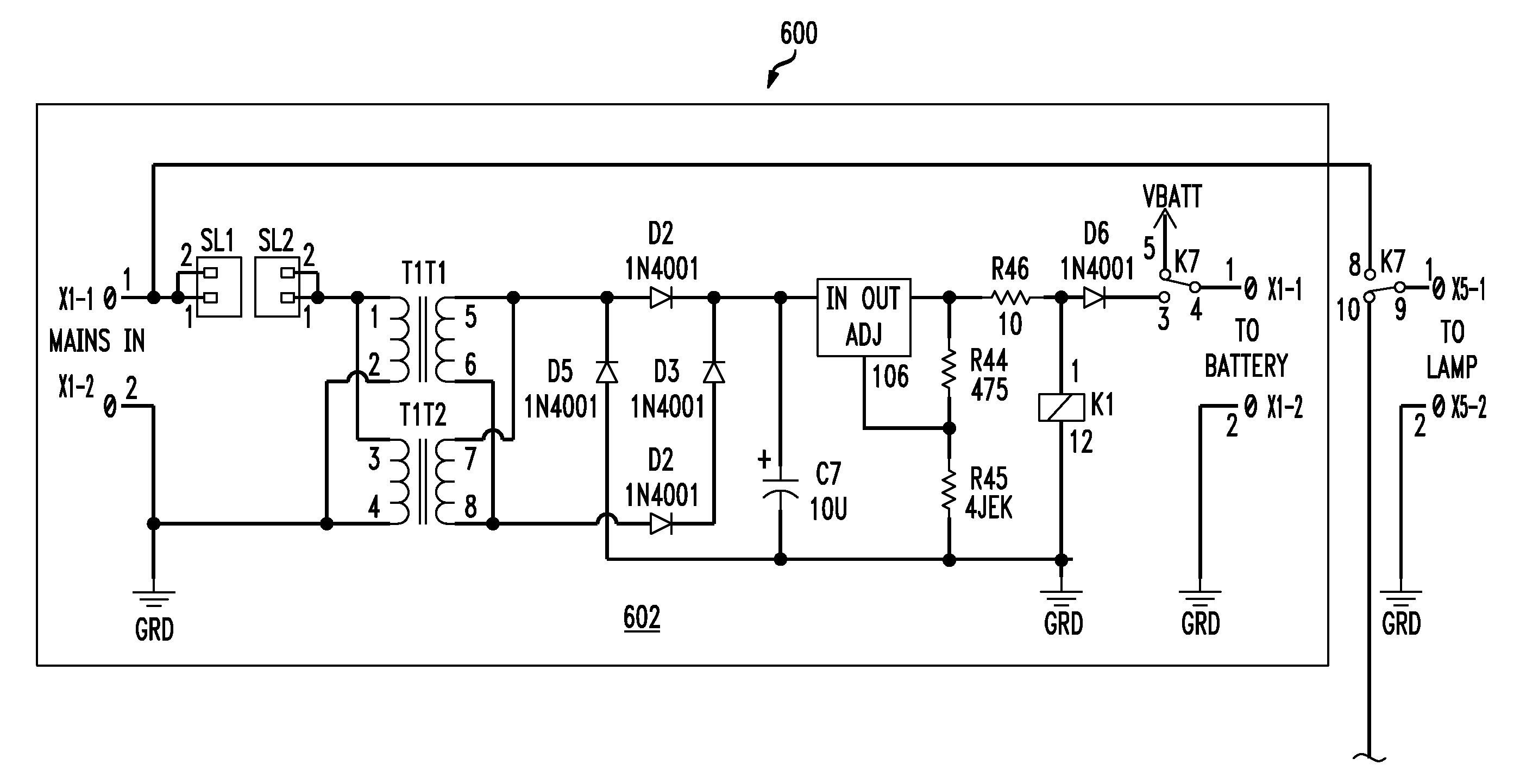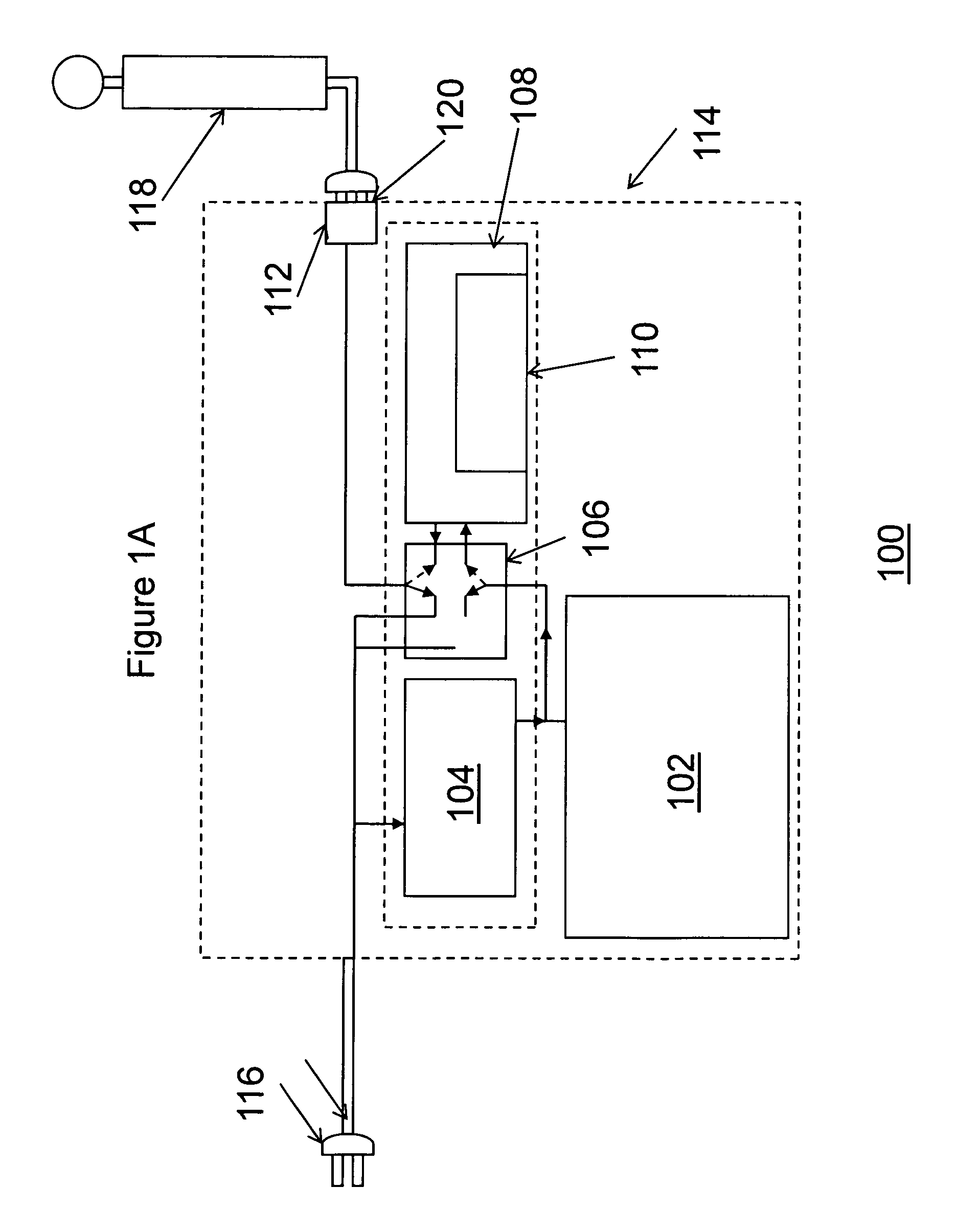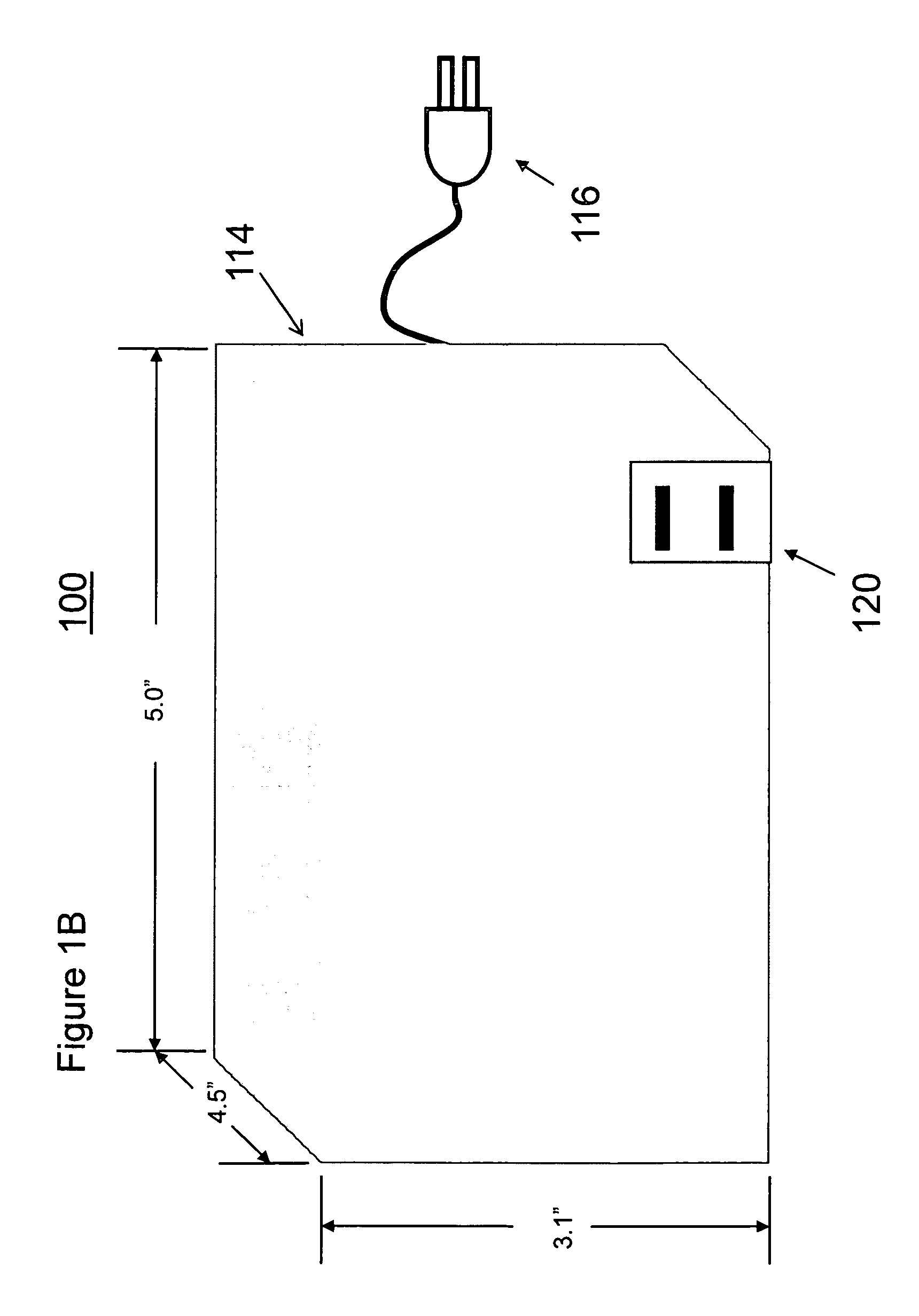Back-up power system
a power system and power supply technology, applied in the direction of emergency power supply arrangements, electric vehicles, transportation and packaging, etc., can solve the problems of requiring rewiring of the building, complicated, and most disturbing consequences, and achieve the effect of optimizing power output and maximizing battery life during a main power failure period
- Summary
- Abstract
- Description
- Claims
- Application Information
AI Technical Summary
Benefits of technology
Problems solved by technology
Method used
Image
Examples
Embodiment Construction
[0024]A system 100 of FIG. 1A comprises a rechargeable battery 102, a charging circuit 104, preferably a trickle-charging circuit, a relay 106, a DC to AC inverter 108, and a timing circuit 110 to optimize a voltage output of the system based on current battery voltage and a desired time period for the voltage output. The system 100 can further comprise an AC receptacle 112 to provide a connection to an appliance to be powered. The system 100 is encased inside a durable housing 114 and can further include a connection means 116, such as an AC cord and plug, to provide a connection to a main power source.
[0025]The rechargeable battery 102 can be a sealed lead acid battery, a nickel metal hydride battery, a lithium ion battery, or any battery capable of being recharged. The battery 102 can be continuously fully charged by a trickle-charging circuit 104, which also can recharge the battery 102 within a specific time period, such as, for example, 12 to 24 hours, by connecting the system...
PUM
 Login to View More
Login to View More Abstract
Description
Claims
Application Information
 Login to View More
Login to View More - R&D
- Intellectual Property
- Life Sciences
- Materials
- Tech Scout
- Unparalleled Data Quality
- Higher Quality Content
- 60% Fewer Hallucinations
Browse by: Latest US Patents, China's latest patents, Technical Efficacy Thesaurus, Application Domain, Technology Topic, Popular Technical Reports.
© 2025 PatSnap. All rights reserved.Legal|Privacy policy|Modern Slavery Act Transparency Statement|Sitemap|About US| Contact US: help@patsnap.com



